The Atlas cedar (Cedrus atlantica) is a tree of the family of Pinaceae. It is native to the mountainous region of Algeria and Morocco, precisely called the Atlas range. Due to its geographical origin it is also known as African cedarand is a close relative of the cedar of Lebanon. The Atlas cedar was introduced in Europe in the nineteenth century, for ornamental purposes. It is still widespread in parks and gardens and in some areas it has naturalized. For growing in the garden, the variety is very popular Cedrus atlantica glaucawith a softer shape and silver-gray foliage that has earned it the name of silver cedar.
So let’s see the botanical characteristics of this splendid tree, the ideal environment for growing it in the garden and the classic uses, both in carpentry and in aromatherapy.
Botanical card of the atlas cedar
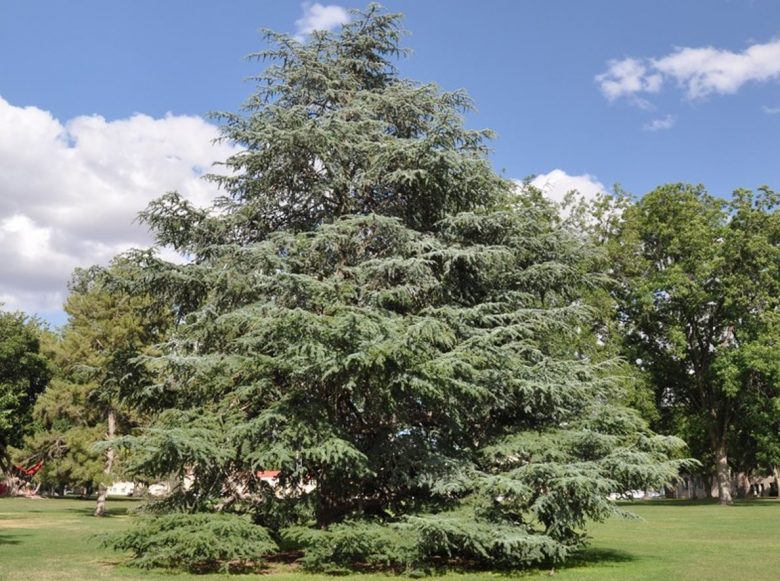
Cedrus atlantica glauca
The Cedrus atlantica it is an evergreen conifer that in nature reaches even 50 m in height, even if, cultivated in gardens, it reaches an average of 30 m. It is a particularly long-lived tree, which easily exceeds 500 years of life. This cedar stands out for its elegant and slender posture, thanks to the pyramidal crown with a clearly erect top.
The trunk, which can reach a diameter of 1.5 m, is straight and cylindrical, with large branches that become expanded over time. The young branches are thinner and more supple, covered with fine hair.
The bark is gray, smooth and shiny until around 25 years of age, then it cracks forming small scales.
Leaves
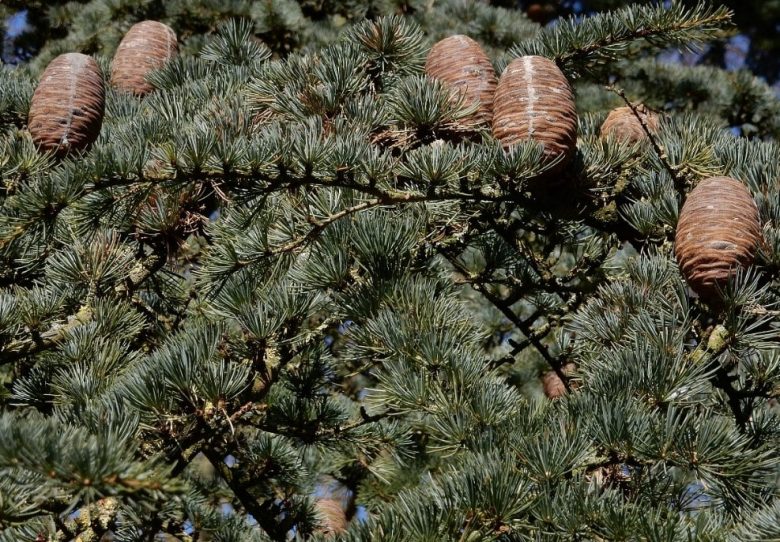
The leaves of the Atlas cedar are needle-like, short and rigid, flattened and arched, long persistent on the branches, up to 2-3 years. In the type species they are glaucous green, gathered in tufts of 20-45 units.
Note also the leaves of the macroblasts, single and spirally dispersed along the branch.
Flowers
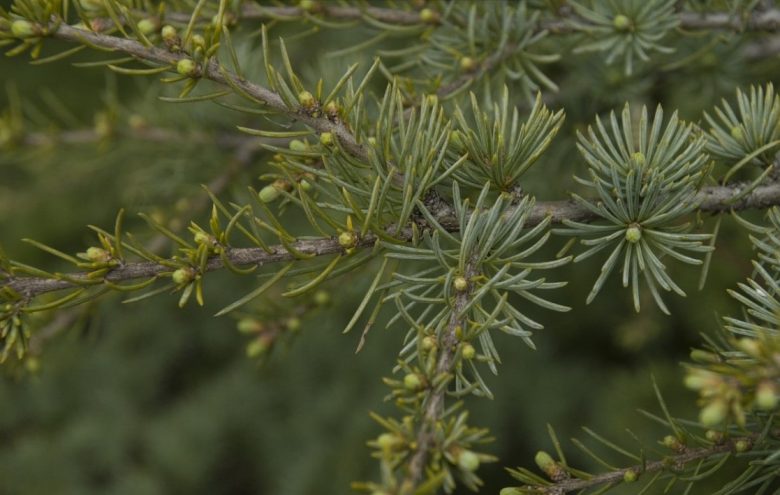
Feminine flowers
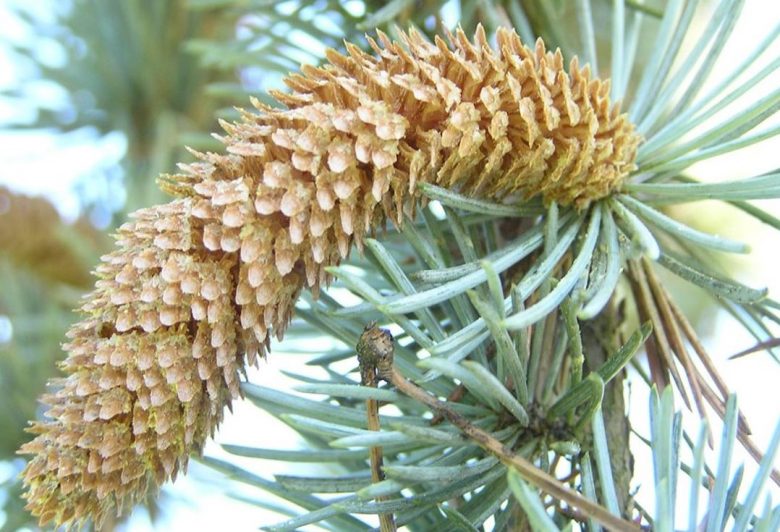
Male flowers
The Cedrus atlantica it is a monoecious species, which bears unisexual flowers on the same plant. The male flowers are very numerous and are found at the apex of the branches, gathered in cones made of thin scales that carry pollen. The color is first yellowish, then brown when the pollen is disseminated.
The female flowers are similar, but smaller and less numerous, greenish in color and positioned at the extremity of the macroblasts.
The Atlas cedar reaches the ability to reproduce around 30 years of life, with flowering occurring in early autumn.
Fruits and seeds
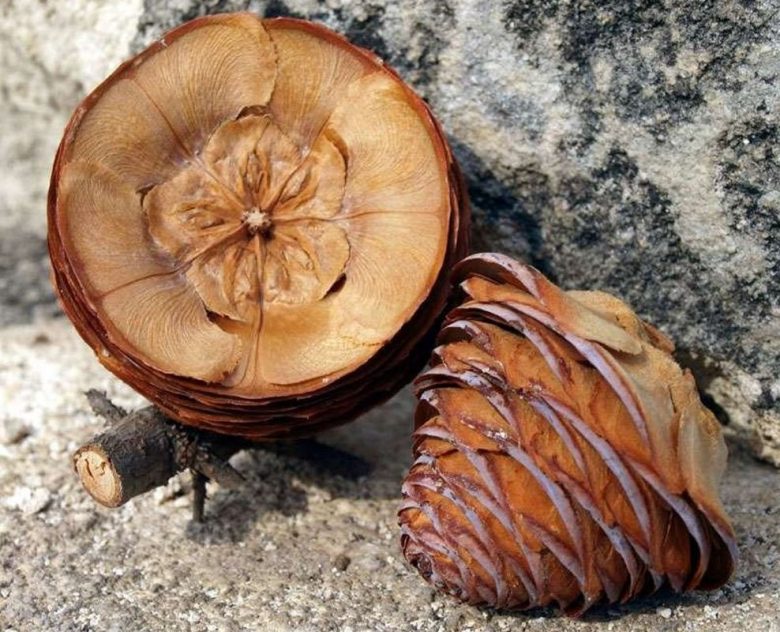
The fruits of the Atlas cedar are conical cones (strobili), squat in shape and erect on the branches, slightly hollowed at the apex, a sort of barrel. The color is initially yellowish-green, purplish-purple in mature pine cones. From fertilization the strobilus takes about 3 years to ripen the seeds that it releases into the environment by disintegrating. The seeds have a 2 cm wing for better dissemination.
Habitat of the Atlas Cedar
In its places of origin, the African cedar grows on calcareous, very poor and sunny soils. In our country, in areas where it can grow spontaneously, it prefers the mild climate of the beech forest.
The cultivated Atlas cedar, on the other hand, manages to adapt almost everywhere, even in city parks as it is a tree that resists air pollution well.
How to grow the Atlas Cedar
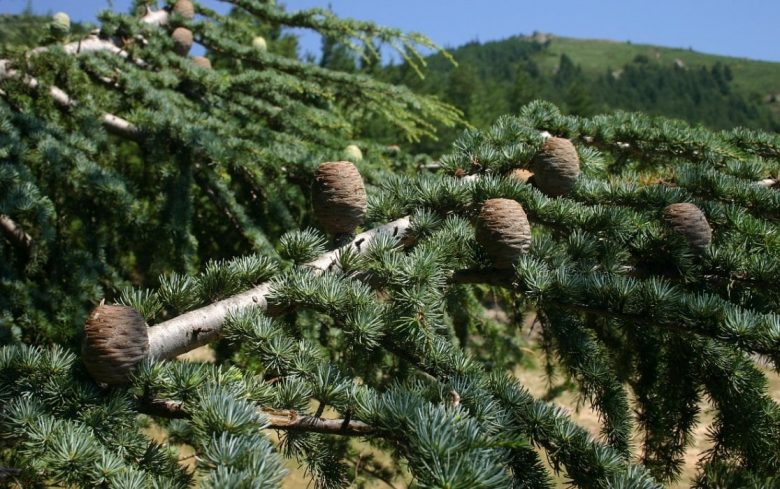
Although growing slowly, the Atlas cedar has an impressive development. So if you decide to plant a specimen in the garden, consider at least 20-25 square meters of space dedicated to it. The Cedrus atlantica moreover it is a heliophilous species, that is, it needs a lot of light to develop properly. So place it in full sun, possibly protected from prevailing winds.
Always keep some distance from underground walls and pipes, which could be damaged by the roots over time.
As for the ground, the ideal would be a soil of medium texture, loose and sufficiently fresh. Better to avoid clayey and compact soils, which do not allow optimal development of large roots and which are more at risk of damaging water stagnation.
Multiplication from seed
The Atlas cedar can be multiplied by seed, the important thing is to find the seeds at the right time, in practice when the pine cone opens and lets them fall to the ground. This happens in the fall. To facilitate germination, the seed can be stratified under cold sand for about a month. Then it should be planted in small individual pots, filled with a good peat soil and perlite.
The soil must always be kept well moist and the container sheltered in a cold greenhouse for the whole winter.
In spring, you can proceed with planting directly in the ground or in a larger container. In the first year after the planting goes protected from frost.
Be careful not to make your Atlas cedar grow too much in a pot, the sooner it starts to take root in the ground the better, unless you want to use it to make a bonsai.
Other techniques
The Cedrus atlantica you can reproduce also by cuttings, taking the apex of semi-woody branches in autumn. The cutting should also be kept in a cold greenhouse, but it has low success rates.
In many buy the plants in the nurseryperhaps opting for the cultivar glauca. Here too the same advice applies as before, avoid buying plants that are too large grown in pots, they should be at most 50-70 cm in height. The transplant of adult plants often suffers in the initial rooting. The Cedrus atlantica born from seed, on the other hand, it is used in nurseries such as rootstockfor varieties of cultivars or for other species of the genus Cedrus (cedar of Lebanon, Cedar of the Himalayas).
Cultural care
The Atlas cedar needs moderate watering only in periods of long summer drought, be careful not to create pools of water around the collar.
Pruning interventions should be avoided, the tree should be left to grow according to its natural shape, just remove a few dry branches or broken by the wind.
Parasites
The two most fearsome pests for the Atlas cedar are the aphids (Cinara cedars And Cinara laportei) and the pine cochineal.
As for the aphids most susceptible to damage are young plants, which can be cleaned at the beginning of infestations by resorting to soft potassium soap or al natural pyrethrum. As for the processionary moth, which infests the needles, protective bands with glue placed on the trunk are used to prevent the ascent of adults or treatments with bacillus thuringiensis var. kurstaki against the larvae present on the foliage.
Classic uses of Cedrus atlantica wood
The Cedrus atlantica it is a forest species of primary importance. It provides an excellent wood, well workable, with an intense smell, very durable. In places where it is intensively cultivated, it is used for the construction of beams and scaffolding, but also in carpentry for furniture and cabinet-making works.
The essential oil of the Atlas cedar
A precious is extracted from the bark and leaves of the Atlas cedar essential oil, used in aromatherapy. It is rich in sesquiterpenes (Himalachenes 55%, betacaryophillene 30%), has balsamic properties that make it perfect as a home fragrance. It is indicated for its calming and relaxing effect, which is why it is used in many yoga rooms. In addition, it is also used as a massage oil or for the preparation of shampoos, as it purifies and rejuvenates the skin and scalp. If you want to give it a try found here.

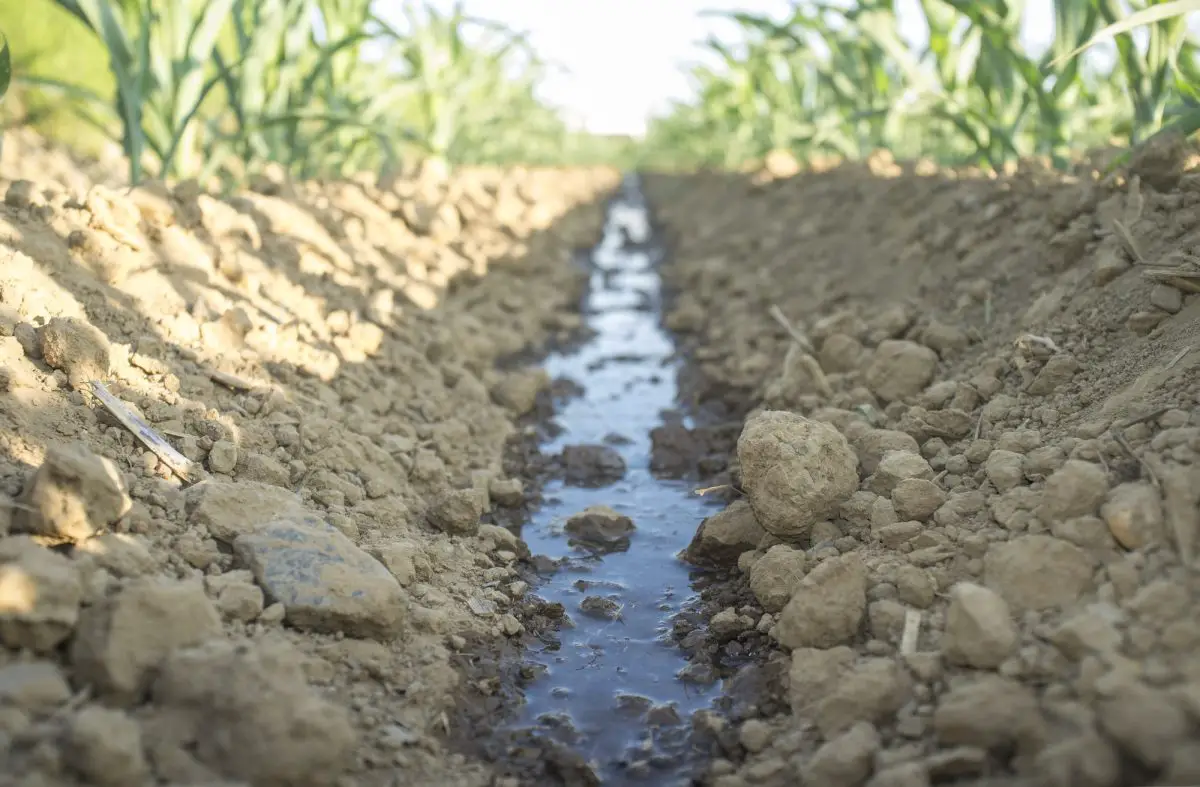

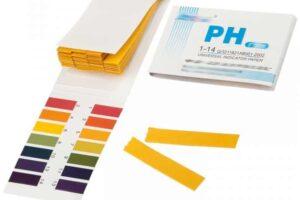
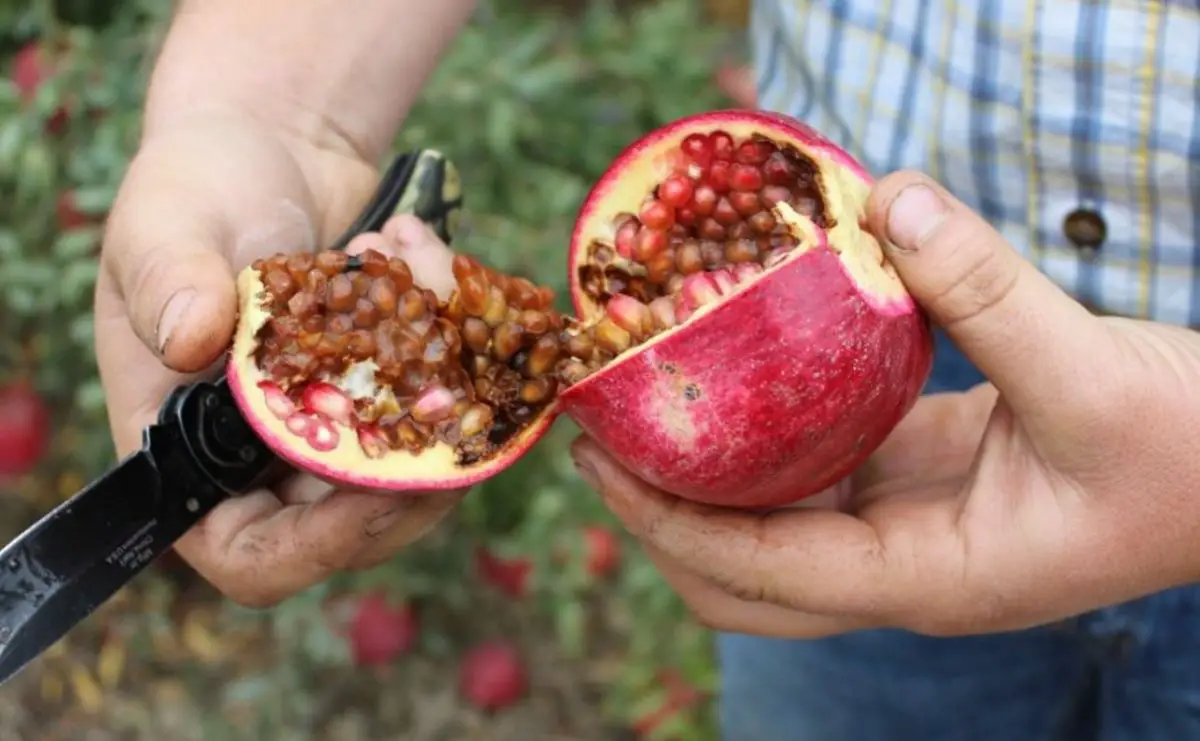

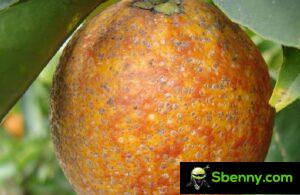
Start a new Thread